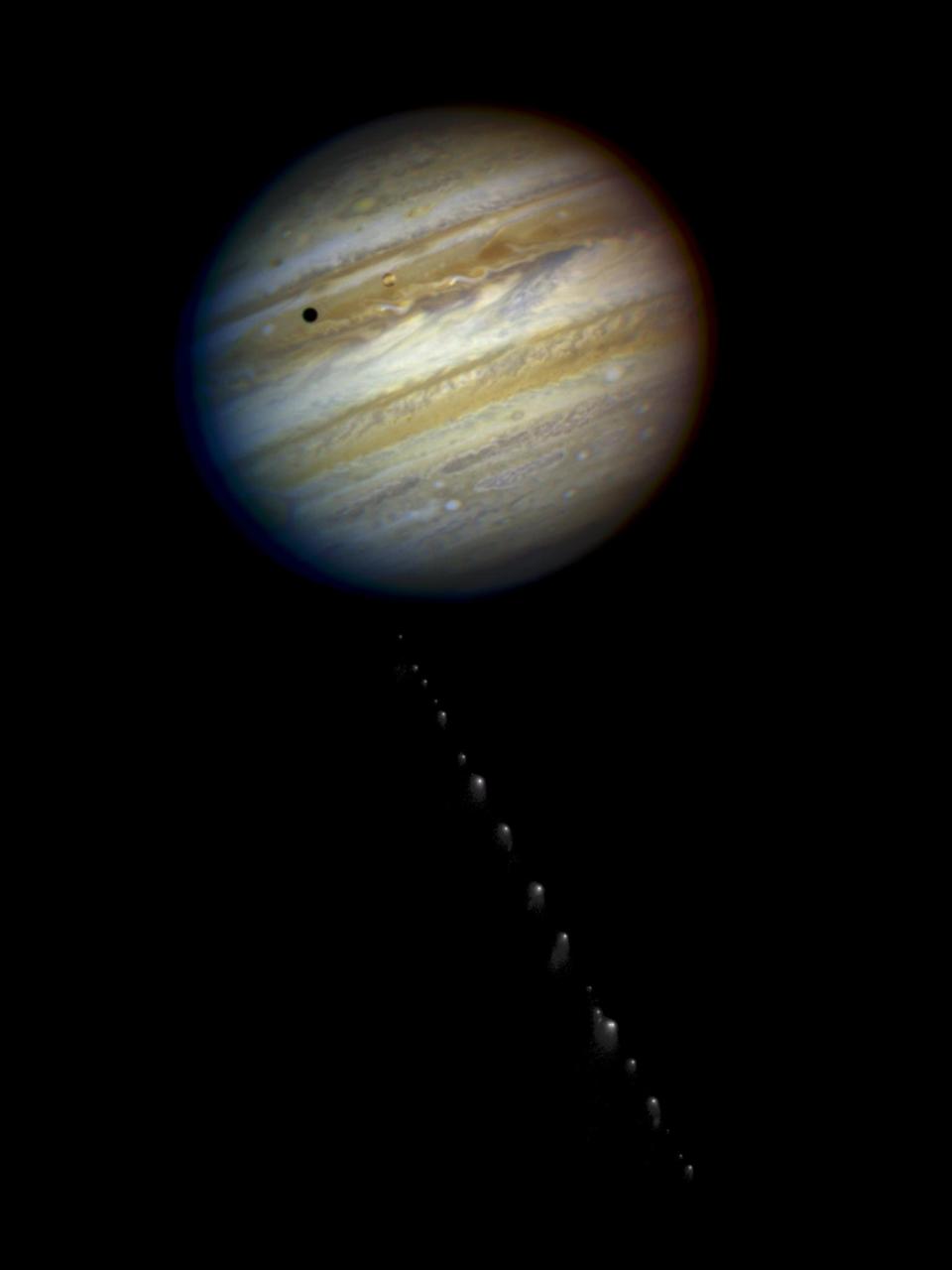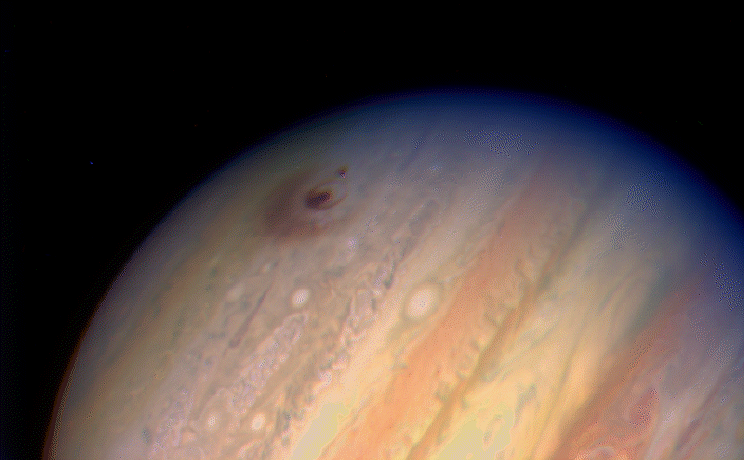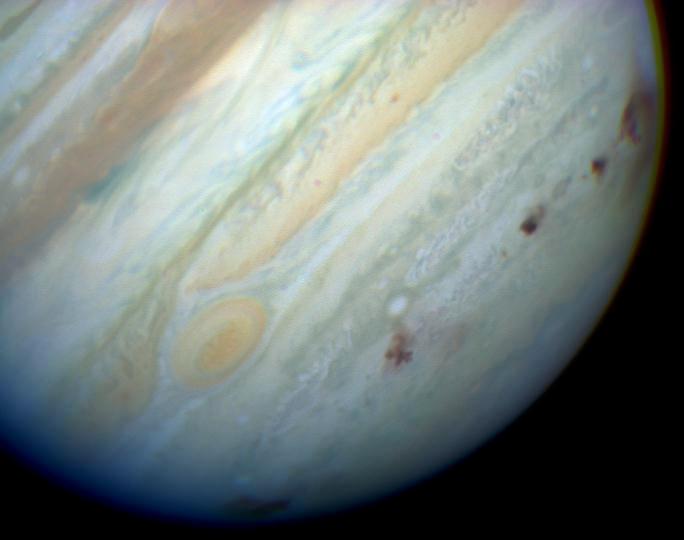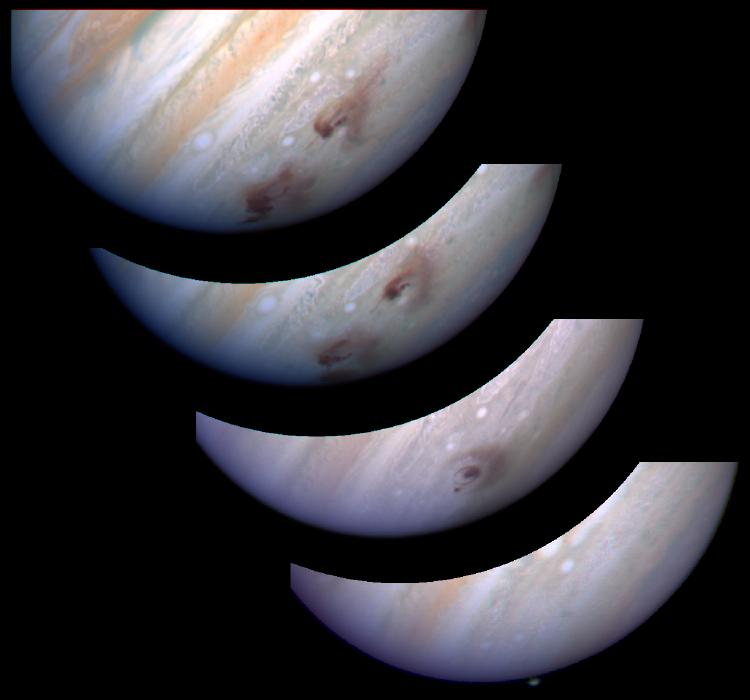Learn About Comet Shoemaker-Levy 9 Collision With Jupiter
Torn Apart Then Consumed
The comet Shoemaker-Levy 9, captured by Jupiter’s gravity decades earlier and torn apart during a close approach in 1992, captivated the world when in July of 1994 twenty one fragments of the comet slammed into the gas giant. The impacts were the first extraterrestrial collisions observed, leaving scars which persisted for months and highlighted the potential risks the Earth faces from similar cosmic strikes.
Fast Fun Summary Facts
- Discovered: Eugene / Carolyn Shoemakers and David Levy, March 18th 1993
- Name: Shoemaker-levy 9
- Nucleus Size: 2 km (1.2 miles)
- Orbit: Captured Jupiter Orbit
- Orbital Period: 2 years
- Eccentricity: 0.9986
- Impact Dates: July 16th - 22nd 1994
Crazy Fun Facts About The Shoemaker-Levy 9 Collision!
- Comet Shoemaker-Levy 9 was first discovered by Carolyn and Gene Shoemaker and David Levy on the evening of March 18th 1993, and as is tradition with comet discoveries, it was named after them.
- This was the first comet to ever be discovered in orbit around a planet (thought to have been captured 20-30 years earlier)!
- Despite initially being considered to be one object, Shoemaker-Levy 9 turned out to be comprised of about 20 fragments orbiting in its distinctive ‘freight train’ appearance. This was assumed to have been the result of the original comet crossing Jupiter's Roche Limit (and being torn apart) during its previous close approach of Jupiter in July 1992.
- Further orbital analysis revealed that the highly eccentric orbit of Shoemaker-Levy 9 would result in the comets ‘train of nuclei’ to plow into Jupiter's atmosphere in July 1994. An extremely rare event, never seen before - the collision between two bodies in the Solar System.
- The world’s attention turned to Jupiter and the anticipation grew. NASA would utilized several spacecraft (Galileo orbiter, Hubble Space Telescope, Ulysses and Voyager 2) in addition to Earth-based telescopes to capture unprecedented views as the string of fragments smashed into Jupiter's cloud tops.
The World Watches as Jupiter is Bombarded - July 16th – 22nd 1994 !
- The first impact of fragment A smashed into Jupiter’s southern hemisphere at a speed of 60 km/s – that’s an incredible 216,000 km/h (134,000 mph)! Wow! The remaining 20 fragments continued to rain down over the following 6 days.
- Huge fireballs were seen rising 3,000 kilometers (1,900 miles) high and with temperatures of 24,000 K (23,700 °C) detected.
- Soon images of the dark scars from the impacts were being spread around the world, some big enough for small telescopes on Earth to see!
- The largest impact occurred on July 18 when fragment G created a gigantic cloud over 12,000 km (7,500 mi) in diameter (The size of the Earth!).
- The impact of fragment G was calculated to have released energy equivalent to 600 times that of the world's total nuclear arsenal! If an object like this hit Earth, it would be devastating and have far reaching consequences.
- The scars which Shoemaker-Levy 9 inflicted on Jupiter would fade over the following months.
- The impacts of the Shoemaker-Levy 9 fragments helped researchers study both the comets and Jupiter’s composition.
- Impacts like the one witnessed in 1994 are believed to be quite rare with one study estimating that comets similar to Shoemaker-Levy 9 impact Jupiter just once every 6,000 years!
- The crater chains observed on the Jovian moons Callisto and Ganymede are also believed to be due to these ‘trains’ of fragmented comets crashing into the moons surfaces.






Galactic Collisions
Shoemaker Levy 9
Collision with Jupiter
Asymmetric Ejecta Pattern
Impact Scars
Colossal Impact



